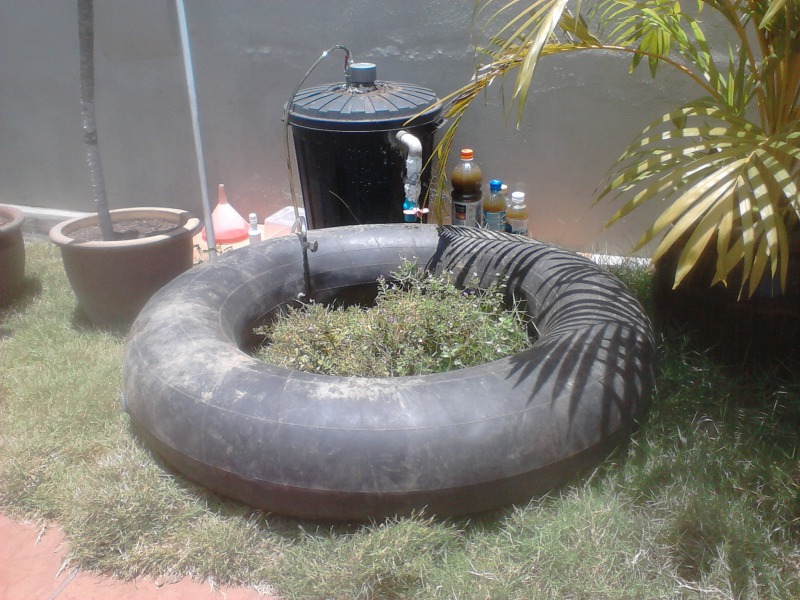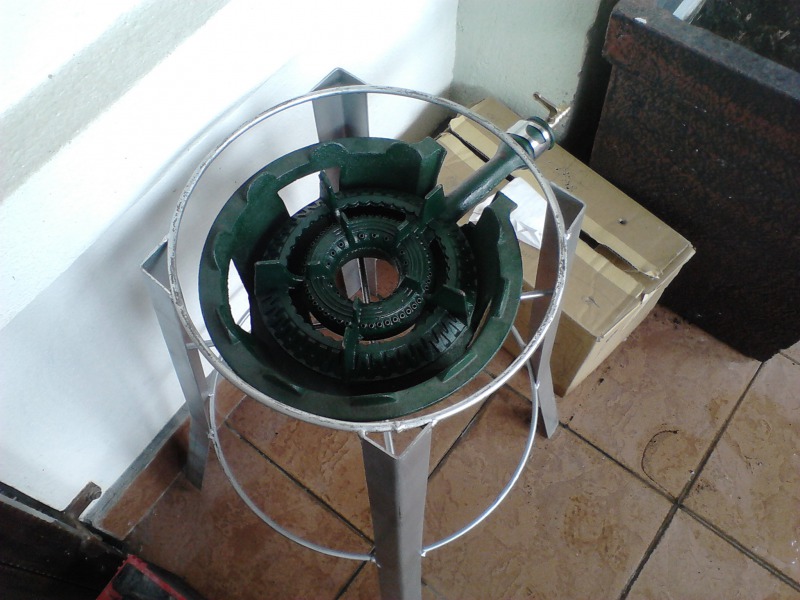Anaerobic organisms require four conditions to produce gas effectively:
- A
constant temperature between 95 and 100°F (35 and 38°C). Gas is
produced at lower temperatures, but only in very small amounts over
an extended period of time.
- The exclusion of oxygen. A septic tank is not designed to keep out
oxygen. Granted, some oxygen is excluded by virtue of the water in which
the organic matter is transported, but a septic tank is not a sealed
system.
- A gentle mixing action. The bacteria that produce methane either
have to be transported to their nourishment or their nourishment has to
be taken to them. Gentle motion accomplishes this.
- Anaerobic digestion will occur best within a pH range of 6.8 to 8.0.
More acidic or basic mixtures will ferment at a lower speed. The
introduction of raw material will often lower the pH (make the mixture
more acidic). Digestion will stop or slow dramatically until the
bacteria have absorbed the acids. A high pH will encourage the
production of acidic carbon dioxide to neutralise the mixture again.
Conditions usually slowing the reactions includes:
Too acidic. Generally if there’s a problem, it’s
that the slurry is too acidic (pH below 7). If there is a lot of new,
raw, green material placed in the digester or if too much material is
added at once, the acid-forming bacteria have a field day. The methane
bacteria are so annoyed by the high acid concentration, they simply
can’t function. When this occurs, it can take a long time for the
methane process to get underway naturally. Low pH is a constant risk and
must be countered by plenty of carbon waste, such as leaves and straw,
or wood ashes.
If a measured amount of new material—no more than
one-fortieth of the total liquid volume of the tank—is added, then the
new material has to be dilute enough not to upset the balance. At
startup, though, there’s a lack of microorganisms and an inclination
toward excessive acidity. Understanding this, we can see why some of the
early literature on making methane states that the startup time can be
anywhere from three weeks to three months.
I mentioned the acidity
problem to a friend with whom I was working at the time. He said, “I
make a lot of wine at home. Every once in awhile, I have the same
problem. When I do, I add a little baking soda. It straightens out the
condition right away.”
The baking soda added to my digester worked
like a charm. Within three days, I had methane on the way. This is the
secret for keeping your digester sweet and happy. Just add a little at a
time until the pH is just right. If the pH keeps dropping, add baking
soda periodically until the acid-forming bacteria are no longer
producing excessive acid. Don’t be fooled if a lot of gas is produced.
The baking soda itself will produce some carbon dioxide.
If the pH
gets so low the digester “sours,” it is very difficult to revive and
must be pumped out by a septic service and restarted. The Maitreya
digester has not experienced this problem.
Too cold.
You’ll need to know how hot the tank is, day to day, season to season.
To eliminate the guesswork, install sensors both inside and outside the
tank. Record these temperatures over a period of time. Then you will
know how efficiently the tank is retaining heat, at what rate the
temperature drops when no heat is added, and how much energy is needed
to raise the temperature. If this is done, then a reliable calculation
can be made of how much heat is needed to maintain working temperature
if “free” heat is not available. Heat conservation, more than any other
factor, determines whether a methane system will “fly” or not.
More info:
http://www.homepower.com/articles/home-efficiency/equipment-products/home-cookin-homemade-biogas

















